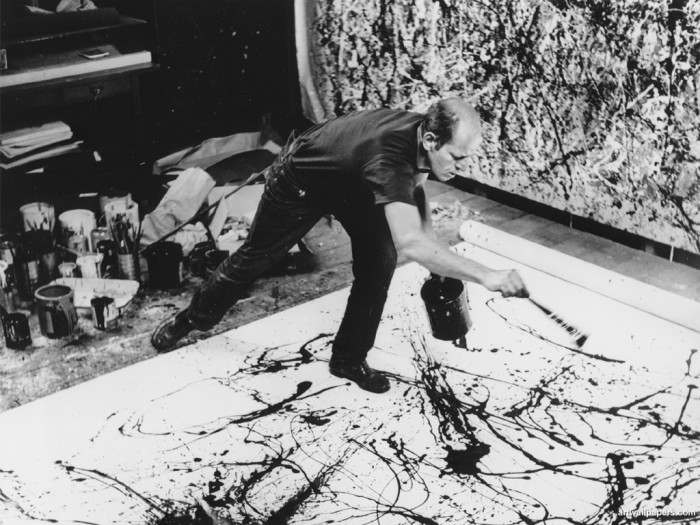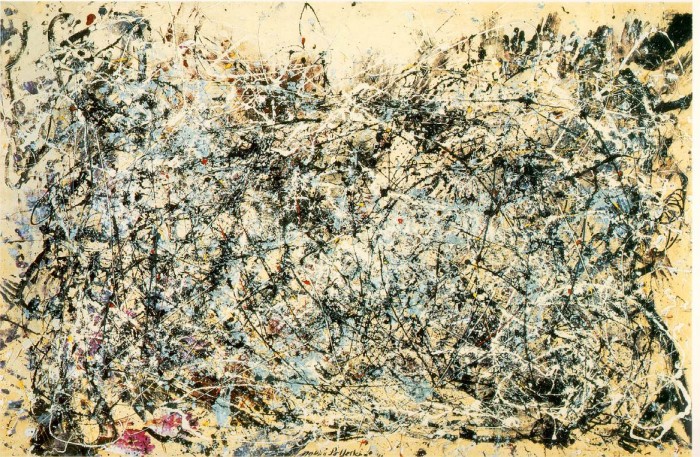I have always loved the art of Jackson Pollock. What for many is the epitome of all that is wrong with abstract art, I find the opposite – I see deep inferences drawn in the lines strewn on the canvas. Yeah … there is something wrong with me – or is it the statistician in me seeing the beauty of physics at work?
A recent study published in Physics Today looks at the scientific nature of Pollock’s unique painting techniques using quantitative analysis and finds surprising results:
“My own interest,” said Mahadevan, “is in the tension between the medium — the dynamics of the fluid, and the way it is applied (written, brushed, poured…) — and the message. While the latter will eventually transcend the former, the medium can be sometimes limiting and sometimes liberating.”
Pollock’s signature style involved laying a canvas on the floor and pouring paint onto it in continuous, curving streams. Rather than pouring straight from the can, he applied paint from a stick or a trowel, waving his hand back and forth above the canvas and adjusting the height and angle of the trowel to make the stream of paint wider or thinner. Simultaneously restricted and inspired by the laws of nature, Pollock took on the role of experimentalist, ceding a certain amount of control to physics in order to create new aesthetic effects.
Mahadevan, collaborating with art historian Claude Cernuschi and physicist Andrzej Herczy?ski, both at nearby Boston College, took an interest in Pollock when his colleagues suggested that the artist may have exploited the same aspects of fluid dynamics that Mahadevan has studied in the past.
While they don’t go so far as to describe Pollock as an experimental Physicist, they do attribute a solid empirical knowledge of fluid dynamics to the artists. That makes sense based on his technique, and opens an intriguing set of possibilities of the link between the sciences and the arts. This link has really been known for centuries, but the use of quantitative analysis to provide a deterministic link? That is new.
The rest of the Physics Today article is an intriguing read (if you find reading technical journals intriguing, that is) and has an amazing look at the details of physics that were at work in the art Pollock was creating. Really cool stuff!
Now here is one of my favorite Pollock works, one that was my computer desktop for a number of years in the 90’s. It is #1 from 1948.
Source: Scientific Computing


